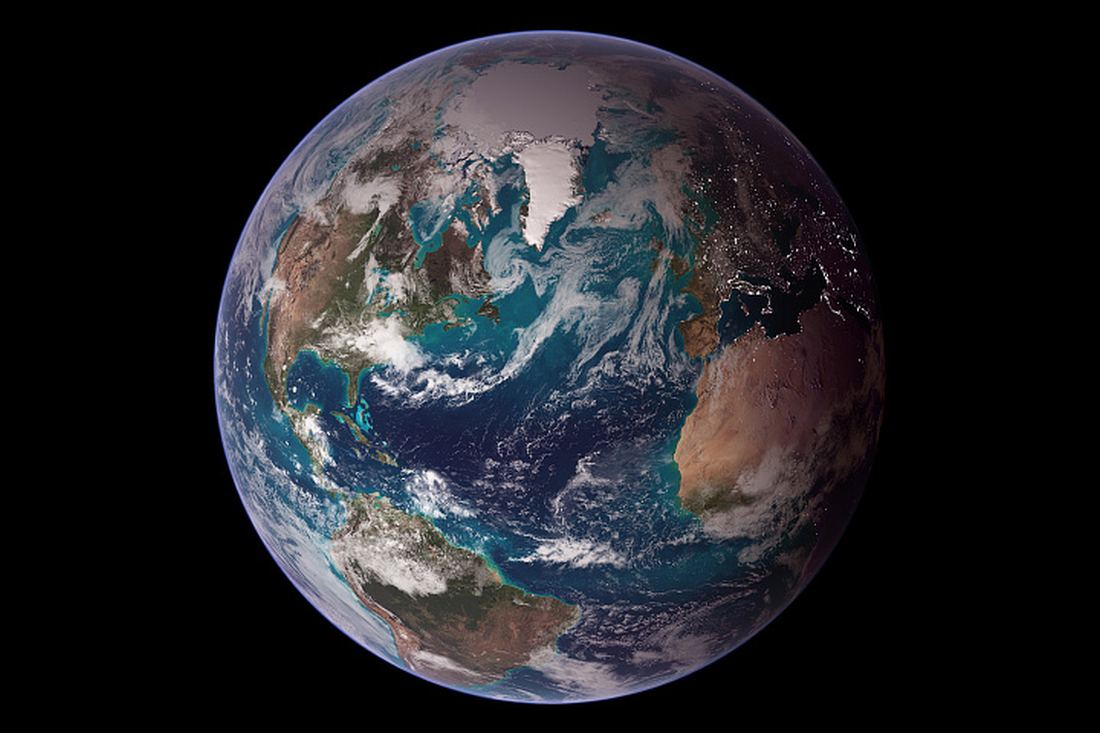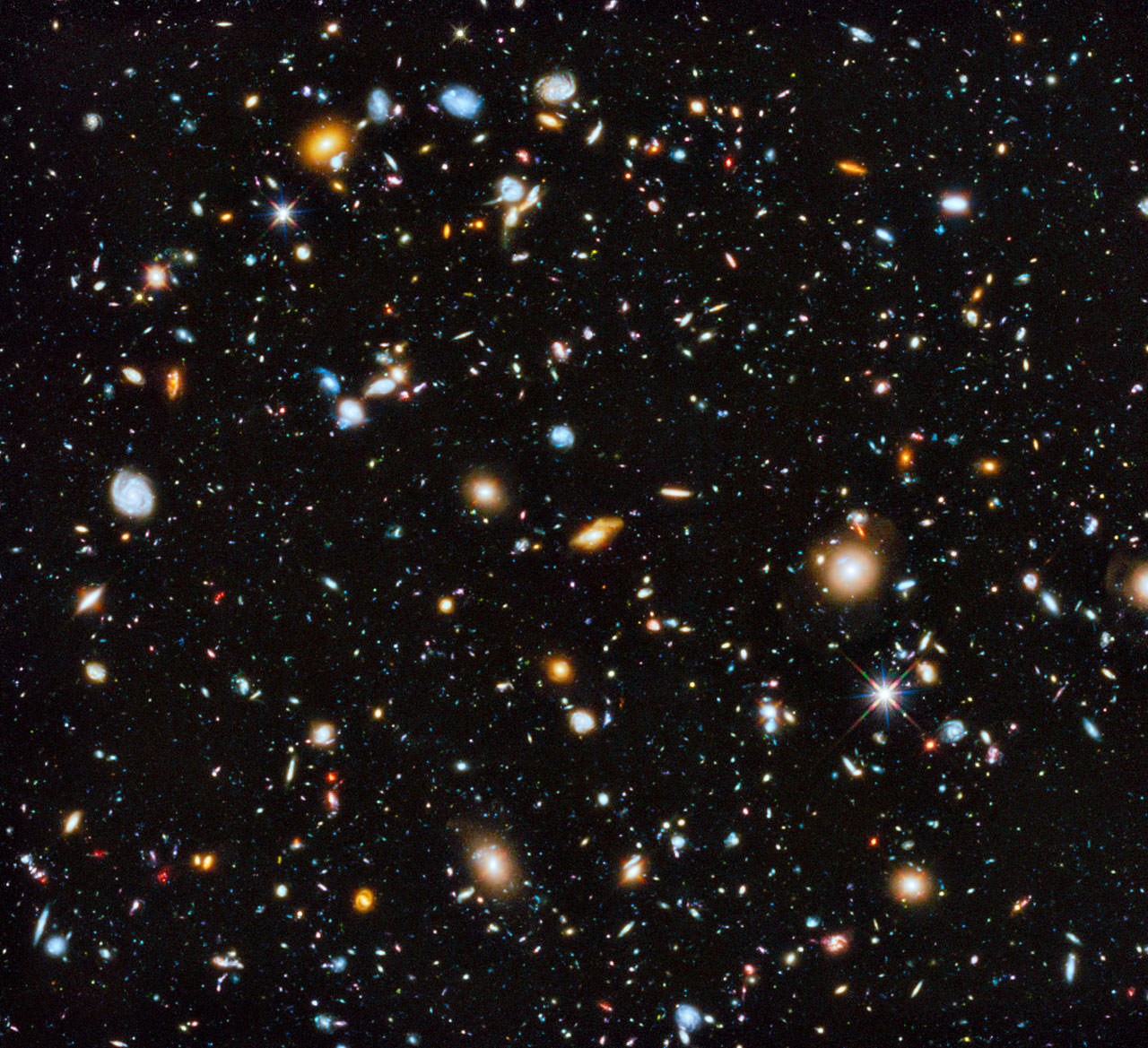As someone that has always lived in the UK countryside I am no stranger to the glory of a dark star-filled sky. Sadly 60% of the world’s population has already lost access to the night sky thanks to light pollution. Across Europe and the US that number climbs to nearer 80%. A team of researchers want to try and track the growth of light pollution and to that end have developed an inexpensive sensor made from “off-the-shelf” parts. Their hope is that people around the world will build and install these sensors to share their data enabling them to track the spread of light pollution. If you’ve got technical skills, this could be a fun project.
Continue reading “Building a Worldwide Map of Light Pollution”Life Might Thrive on the Surface of Earth for an Extra Billion Years

The Sun is midway through its life of fusion. It’s about five billion years old, and though its life is far from over, it will undergo some pronounced changes as it ages. Over the next billion years, the Sun will continue to brighten.
That means things will change here on Earth.
Continue reading “Life Might Thrive on the Surface of Earth for an Extra Billion Years”Exoplanets Could be Hiding Their Atmospheres
Most of the exoplanets we’ve discovered orbit red dwarf stars. This isn’t because red dwarfs are somehow special, simply that they are common. About 75% of the stars in the Milky Way are red dwarfs, so you would expect red dwarf planets to be the most abundant. This also means that most habitable worlds are going to orbit these small, cool stars, and that has some significant consequences for our search for life.
Continue reading “Exoplanets Could be Hiding Their Atmospheres”Actually, Ceres Might Have Formed in the Asteroid Belt After All

Dwarf planet Ceres is the largest planetary body in the Asteroid Belt. For a long time, scientists thought it was born in the outer solar system and then migrated to its present position. Some evidence for that origin lies in extensive surface deposits of ammonium-rich materials on the Cerean surface.
Continue reading “Actually, Ceres Might Have Formed in the Asteroid Belt After All”Metal Part 3D Printed in Space for the First Time
Additive manufacturing, also known as 3D printing, has had a profound impact on the way we do business. There is scarcely any industry that has not been affected by the adoption of this technology, and that includes spaceflight. Companies like SpaceX, Rocket Lab, Aerojet Rocketdyne, and Relativity Space have all turned to 3D printing to manufacture engines, components, and entire rockets. NASA has also 3D-printed an aluminum thrust chamber for a rocket engine and an aluminum rocket nozzle, while the ESA fashioned a 3D-printed steel floor prototype for a future Lunar Habitat.
Similarly, the ESA and NASA have been experimenting with 3D printing in space, known as in-space manufacturing (ISM). Recently, the ESA achieved a major milestone when their Metal 3D Printer aboard the International Space Station (ISS) produced the first metal part ever created in space. This technology is poised to revolutionize operations in Low-Earth Orbit (LEO) by ensuring that replacement parts can be manufactured in situ rather than relying on resupply missions. This process will reduce operational costs and enable long-duration missions to the Moon, Mars, and beyond!
Continue reading “Metal Part 3D Printed in Space for the First Time”NASA Watches a Peanut-Shaped Asteroid Drift Past Earth
Peanuts! Get your peanuts here! The Solar System has been passing out peanuts lately in the form of two different oddly shaped asteroids that recently passed by Earth, and both look like over-sized peanuts. The latest peanut-shaped asteroid pass was on September 16, 2024, when the near-Earth asteroid 2024 ON came within 1 million kilometers (62,000 miles) of Earth (2.6 times the Earth-Moon distance). Radar imaging revealed the asteroid was peanut-shaped because it is actually a contact binary – which means it is made of two smaller objects touching each other. NASA says the two rounded lobes are separated by a pronounced neck, and one lobe about 50% larger than the other.
In total, 2024 ON measures about 350 meters (382 yards) long. The radar could resolve features down to about 3.75 meters across on the surface, including brighter boulders. NASA says about 14% of asteroids in this size range (larger than about 200 meters (660 feet)) are contact binaries.
Continue reading “NASA Watches a Peanut-Shaped Asteroid Drift Past Earth”Did Mars Once Have a Third, Larger Moon?
We are all familiar with our one Moon but other planets have different numbers of moons; Mercury has none, Jupiter has 95 and Mars has two. A new paper proposes that Mars may actually have had a third larger moon. Why? The red planet has a triaxial shape which means it bulges just like Earth does but along a third axis. The paper suggests a massive moon could have distorted Mars into this shape.
Continue reading “Did Mars Once Have a Third, Larger Moon?”The Early Universe Had a Lot of Black Holes

The Hubble Deep Field and its successor, the Hubble Ultra-Deep Field, showed us how vast our Universe is and how it teems with galaxies of all shapes and sizes. They focused on tiny patches of the sky that appeared to be empty and revealed the presence of countless galaxies. Now, astronomers are using the Hubble Ultra-Deep Field and follow-up images to reveal the presence of a large number of supermassive black holes in the early Universe.
This is a shocking result because, according to theory, these massive objects shouldn’t have been so plentiful billions of years ago.
Continue reading “The Early Universe Had a Lot of Black Holes”SETI Scientists Scan TRAPPIST-1 for Technosignatures

If you are going to look for intelligent life beyond Earth, there are few better candidates than the TRAPPIST-1 star system. It isn’t a perfect choice. Red dwarf stars like TRAPPIST-1 are notorious for emitting flares and hard X-rays in their youth, but the system is just 40 light-years away and has seven Earth-sized worlds. Three of them are in the potentially habitable zone of the star. They are clustered closely enough to experience tidal forces and thus be geologically active. If intelligent life arises easily in the cosmos, then there’s a good chance it exists in the TRAPPIST-1 system.
Continue reading “SETI Scientists Scan TRAPPIST-1 for Technosignatures”A Star Was Kicked Out of a Globular Cluster by an Intermediate-Mass Black Hole

Astronomers have solid evidence for the existence of stellar-mass black holes and supermassive black holes. However, evidence for Intermediate Black Holes (IMBHs) is more elusive. Their existence remains hypothetical.
However, study by study, evidence is accumulating for IMBHs. The latest comes from the globular cluster M15, where a fast-moving star suggests the presence of something massive. Could it be an elusive IMBH?
Continue reading “A Star Was Kicked Out of a Globular Cluster by an Intermediate-Mass Black Hole”




